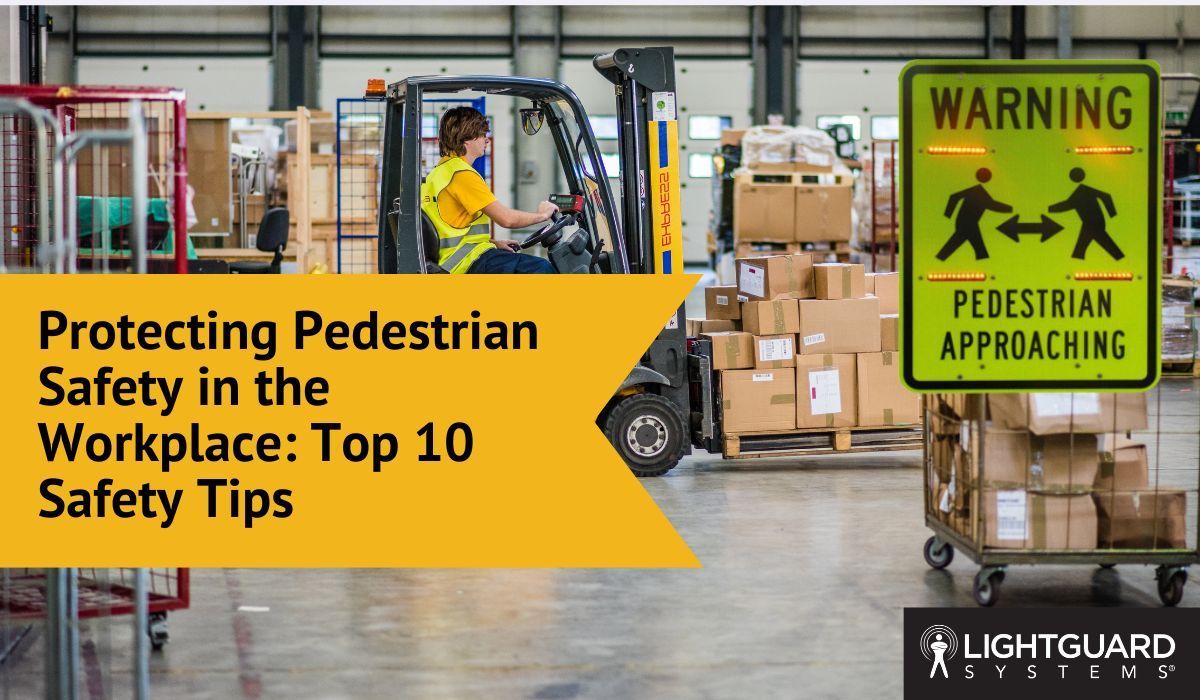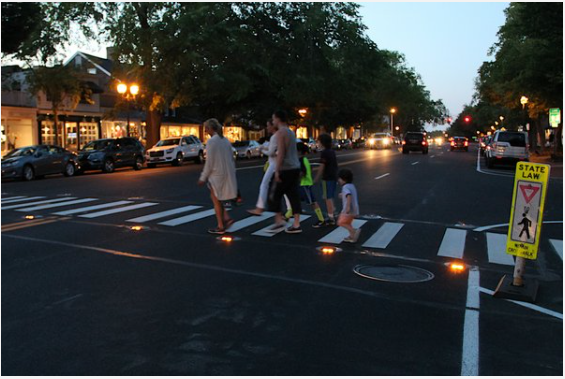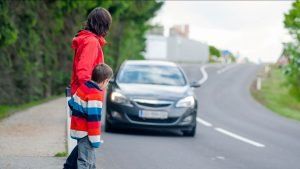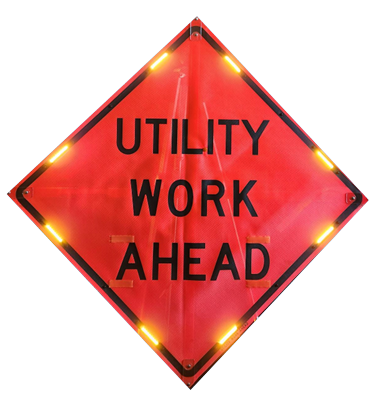How to Get a Lighted Crosswalk in Your Community
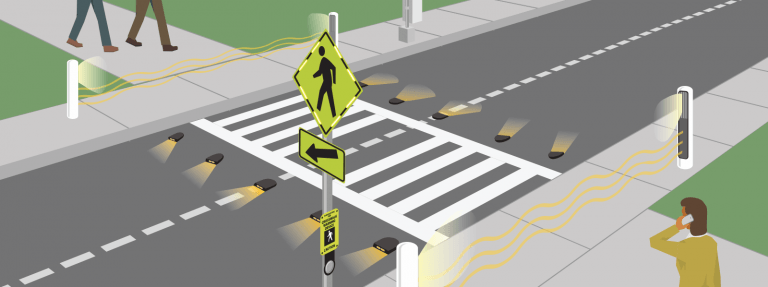
There is an unsafe crosswalk in your community and you want a lighted crosswalk installed. Sometimes the solution is as easy as making a phone call to your city’s traffic engineer. In reality, you may need to build a case, get community buy-in, and petition your city for an effective traffic safety solution. These 8 steps will help guide you through the process, and navigate the many traffic safety project hurdles that you may encounter along the way.
Step #1: Identify the Crosswalk that You Want “Lit Up”
Here are some highlights on pedestrian and traffic crashes and deaths from 2008 to 2017:
Identify the crosswalk location that you feel is unsafe and where you would like the city to install a lighted crosswalk system. To qualify for a lighted crosswalk system, the location must be an uncontrolled mid-block crosswalk, or uncontrolled intersection, where no traffic lights or signs [stop or yield] are used to indicate the right-of-way.
Step #2: Talk with Neighbors and Community
Find out if your neighbors and other community members also have a pedestrian safety concern around the same crosswalk that you have identified. If so, let them know that you are organizing a petition to the city to improve pedestrian safety by installing a Smart Crosswalk™, and that you will be planning and inviting them to a meeting to help organize and support this effort. If you can, organize a meeting through your block captain, neighborhood group, or homeowners’ association. If the crosswalk is at or near a school zone, contact the local PTA group, school principal, or other local organization for support. You will have an easier time approaching local officials if you work with existing community leadership.
Step #3: Research Your City’s Procedure
Research and be clear on your city’s procedure for traffic calming devices, such as lighted crosswalks. These specifics will help you determine your course of action. Cities may require a traffic or pedestrian crosswalk study before authorizing a lighted crosswalk system, so your initial goal might be to prompt this.

- Identify the appropriate department and contact person. It may be public safety, engineering, public works, transportation, street, or something else.
- Identify the local process for obtaining a traffic study, if one is required.
- Identify legal and preferred [already in use] traffic calming methods for your municipality. Not every city allows lighted crosswalk systems, but most do.
- Print related guides and applications from your local government’s website.
Step #4: Hold a Community Meeting & Begin Gathering Data
By now, you understand what your municipality requires and have defined the target crosswalk location in need of a lighted crosswalk system. Bring all of this with you to share with the community at the meeting. Additional research may need to be done and/or items filled out for the city. Items to discuss at the meeting could include:
- The cause(s) of the unsafe crosswalk. Does heavy traffic start before and extend beyond your block and this location? Look at the bigger picture; try to be specific about the cause of the safety issue.
- Establish who will be the liaison and contact between the neighborhood and the city.
- Determine what data needs to be collected and who will be responsible for collecting it. Make sure the format is easy to understand. Data to collect includes:
- Identify the number of pedestrian-generating facilities (Ex. schools, parks, restaurants, transit stops, shopping malls), basically any place that generates pedestrian activity, their proximity to the target area and frequency of occurrence.
- Identify when heavy traffic, speeding, and any other driving condition that create hazards.
- Identify pedestrian usage of the crosswalk, and times. [Most accidents occur at nighttime.]
- Try to demonstrate that a number of cars aren’t stopping for pedestrians.
- Identify the number or percentage of pedestrians considered vulnerable; this includes children under 12, seniors, disabled, etc.
- Gather other data, accident reports, newspaper articles and stories about the crosswalk location.
- It is helpful to collect testimonials from neighbors about how the dangers of this crosswalk affects their and/or their family’s safety, and impacts their quality of life.
Step #5: Create A Petition
By now you should have enough information to create your petition. You can create one yourself with space enough for 200 signatures (or more if required by the city). Print it out and begin gathering signatures, or use online petition sites such as: www.change.org, www.thepetitionsite.com or www.gopetition.com. Online petitions make signature-gathering and sharing easy, and let you email the petition directly to the city and other local officials. Be sure to collect addresses along with signatures, as the city will want to see the names of its local residents who are in favor of a lighted crosswalk. If accidents have occurred at this crosswalk, include URL links or photocopies of news articles, photos of the crosswalk, testimonials from residents, and documentation gathered from Step #4 and attach send with the petition.
Step #6: Present Your Case to the City
Present/send the signed petition, along with your city’s official application and documents created in Step #3. Include a cover letter with your contact information explaining your request for a lighted crosswalk system, such as a LightGuard Systems Smart Crosswalk, and the reasons your community wants this.
- Provide the name of your neighborhood or organization and the crosswalk location.
- Tell them why you are concerned about this crosswalk’s safety, and reference the neighborhood testimonials, data, accident reports, newspaper articles and stories collected in Step #4.
- Explain that you’ve held a meeting and have a petition with a certain number of signatures from residents in the target area.
- Explain the procedure you are following, such as the city’s application form.
- Print (on official letterhead, if possible) and mail these to your city contact(s) identified in Step #3.
Step #7: Contact Other Local Officials
You should also identify and reach out to your local council person, police precinct and fire house. Ask your council person to send a letter of support to the city contact. Can they provide any resources to assist? Ask the precinct if they are able to conduct a traffic study, if needed.Report findings back to your community.
Step #8: Follow Up
However, if you do not hear back from your city contact within two weeks, call and follow up. Ask when you can expect to receive an answer about the installation of a lighted crosswalk system, and the next steps in the process. [You may need to do this several times.] If necessary, bring your formal complaint—and other concerned neighbors—to council meetings or other relevant public meetings.
TIP: If tax dollars are insufficient for funding a lighted crosswalk project, consider holding a fundraising event or online campaign. Funding sources could be neighbors, local businesses and government—anyone who has an interest or whose establishment will be affected by the project. Get pricing from LightGuard Systems on lowest cost options, such as a push button activated, AC powered flashing LED sign or RRFB system—a faster and less costly solution than a complete lighted crosswalk system with in-roadway warning lights. For ideas, take a look at our Smart Crosswalk Brochure and starting pricing.
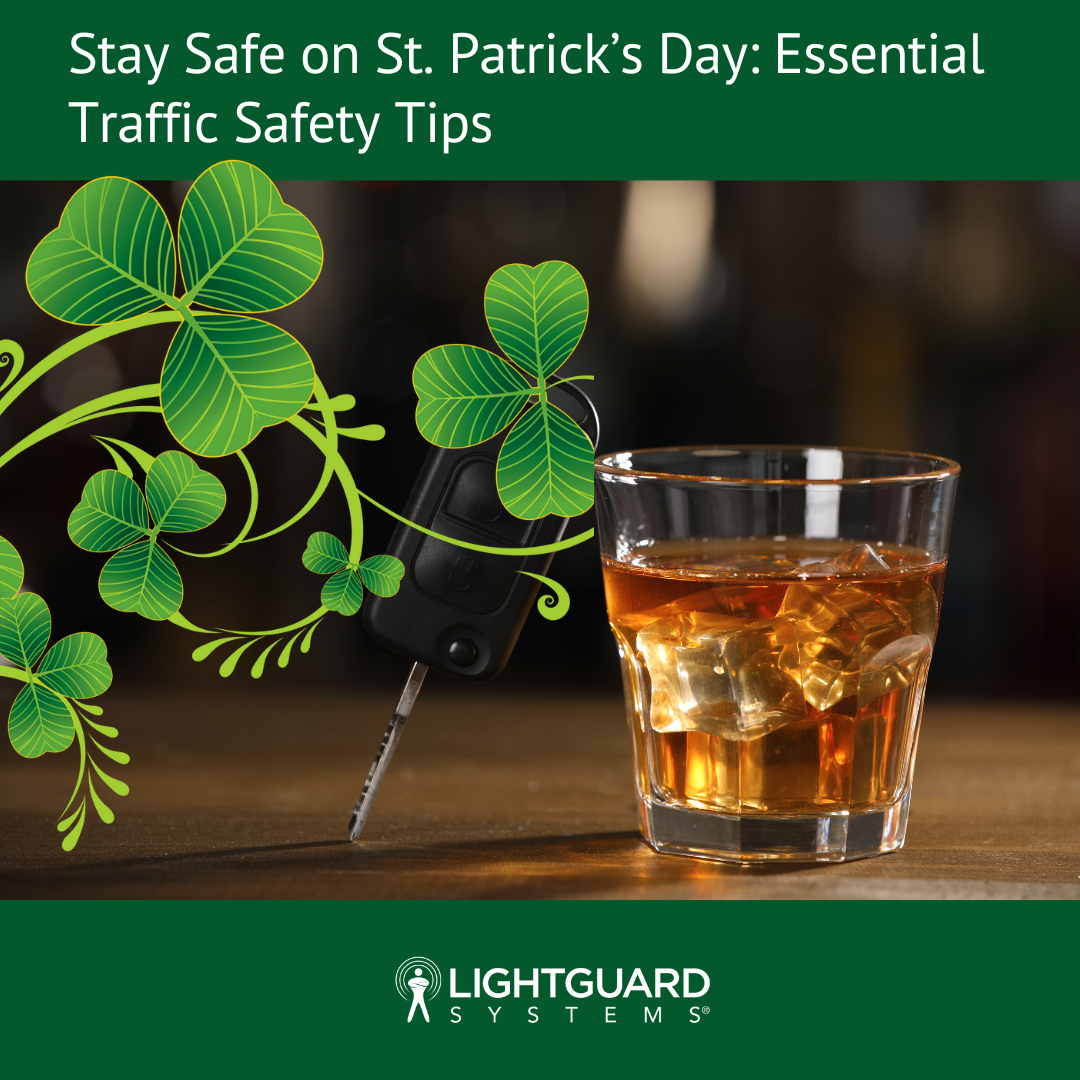
LightGuard Systems is a registered trademark™ of LightGuard Systems, Inc. Smart Crosswalk is a trademark™ name of LightGuard Systems, Inc. ©2021 LightGuard Systems, Inc. All rights reserved.
Let Us Help You Design a Safer Crosswalk System in Your Community! Contact LightGuard Systems Now.





